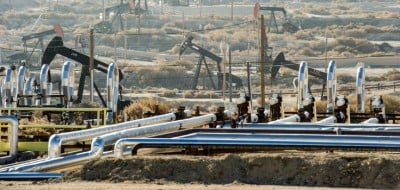People Living Near Fracking Sites Suffer Severe Health Problems: Study
Suffering from heart conditions, brain illness, and more

Research shows that people who live near hydraulic fracturing (fracking) sites have more severe health problems than those who don’t, and wind up in the hospital more often.
Researchers from the University of Columbia and the University of Pennsylvania wrote in a study published in PLOS ONE that those who live close to the natural oil and gas drilling sites are more likely to suffer from heart conditions, neurological illnesses, and cancer. [1]
The scientists analyzed 198,000 hospitalizations records over a four year period (from 2007 to 2011) in Northern Pennsylvania counties, categorized 25 medical scenarios, and then associated each case with its proximity to a fracking area. A larger number of hospitalizations were found in those areas where drilling takes place.
According to the researchers, there are 18 zip code areas with a well density higher than 0.79 wells per square kilometer. That means a person who lives in one of those zip codes has a 27 percent greater risk of suffering from one of the aforementioned conditions. [1]
Fracking involves injecting a mixture of water, sand, and various chemicals into shale rock formations to release the oil and gas trapped inside. The practice is controversial because the chemicals can leak into ground water and release into the atmosphere, polluting both the body and the environment. Hydraulic fracturing has been banned in some states and communities, and other states and locales are trying to prohibit the process in their areas. [1]
“At this point, we suspect that residents are exposed to many toxicants, noise and social stressors due to hydraulic fracturing near their homes, and this may add to the increased number of hospitalizations,” said Dr. Reynold Panettieri, Jr., deputy director of the Center of Excellence in Environmental Toxicology at the University of Pennsylvania, and senior author of the study.
Some of the chemicals used in hydraulic fracturing are endocrine-disrupting chemicals, or EDCs, which can interfere with the normal functioning of the endocrine system, potentially causing infertility, cancer, and birth defects in residents who live near drilling sites. [2]
“More than 700 chemicals are used in the fracking process, and many of them disturb hormone function,” said Dr. Susan C. Nagel of the University of Missouri School of Medicine. [2]
To put the health and environmental costs of fracking into perspective, here are a few fast facts from 2013 that were published at EnvironmentAmerica.org:
- Fracking Wells since 2005 – 82,000
- Toxic Wastewater Produced in 2012 (billion gallons) – 280
- Water Used since 2005 (billion gallons) – 250
- Chemicals Used since 2005 (billion gallons) – 2
- Air Pollution in One Year (tons) – 450,000
- Global Warming Pollution since 2005 (million metric tons CO2-equivalent) – 100
- Land Directly Damaged since 2005 (acres) – 360,000
Notes
[1] PulseHeadlines (Featured image sourced from PulseHeadlines)
[2] The Telegraph
Follow us: @naturalsociety on Twitter | NaturalSociety on Facebook

